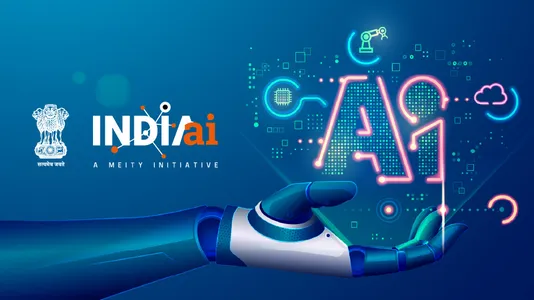Artificial Intelligence (AI) has emerged as the backbone of the 21st-century digital revolution, shaping industries, governance, and innovation across the globe. Recognizing its transformative potential, the Government of India launched the IndiaAI Mission in 2024, a visionary step to make India a global leader in artificial intelligence research, development, and application. With a massive outlay of ₹10,372 crore, this mission seeks to empower innovation while ensuring AI remains inclusive, ethical, and beneficial for all sections of society.
Approved by the Union Cabinet on March 7, 2024, the IndiaAI Mission is a flagship initiative under the Ministry of Electronics and Information Technology (MeitY). It builds upon the National Strategy for Artificial Intelligence (2018) and aims to create a strong AI ecosystem focusing on computing power, innovation, skilling, and ethical governance.
🌐 Key Pillars of the IndiaAI Mission
IndiaAI Compute Capacity:
At the heart of the mission lies a plan to establish large-scale AI infrastructure with over 10,000 GPUs. This will enable startups, researchers, and government institutions to access high-end computational power, accelerating AI model training and innovation across sectors.
IndiaAI Innovation Centre:
A dedicated center will focus on developing indigenous Large Multimodal Models (LMMs) and domain-specific foundational models. These innovations will strengthen India’s capabilities in key sectors like healthcare, education, agriculture, and climate management.
IndiaAI Datasets Platform:
A centralized data repository will be created to provide high-quality, non-personal datasets for model training. This open and standardized data approach will ensure fairness, transparency, and better accessibility for innovators.
Startup Financing and Support:
The mission will provide targeted funding and mentorship for deep-tech AI startups, helping them commercialize homegrown solutions and contribute to India's economic growth.
FutureSkills and Capacity Building:
AI and data laboratories will be established across Tier-2 and Tier-3 cities, ensuring that the benefits of AI education and employment are not limited to metropolitan regions. This move will also foster a new generation of AI researchers and professionals.
Safe and Trusted AI:
The mission emphasizes developing a strong framework for ethical AI governance. By ensuring privacy protection, data security, and bias mitigation, India aims to promote AI that is transparent, accountable, and people-centric.
🇮🇳 Goals and Benefits
The IndiaAI Mission envisions building technological sovereignty by reducing dependence on foreign platforms and strengthening local innovation. It seeks to make AI accessible to every citizen—bridging digital divides and promoting inclusive growth. The mission will also generate new employment opportunities, enhance productivity across industries, and support national priorities such as agriculture modernization, healthcare accessibility, and digital governance.
Challenges and the Road Ahead
Despite its grand vision, the mission faces challenges related to data privacy, ethical regulation, and long-term collaboration between government, academia, and industry. Addressing these effectively will be key to realizing India’s full AI potential.
Conclusion
The IndiaAI Mission represents a turning point in India’s digital journey—one that combines technological ambition with ethical responsibility. It is not just about machines learning to think but about empowering humans to think bigger, faster, and fairer. With its inclusive vision, India is poised to become a global hub for responsible AI innovation, leading the world into a future where artificial intelligence truly serves humanity.



















